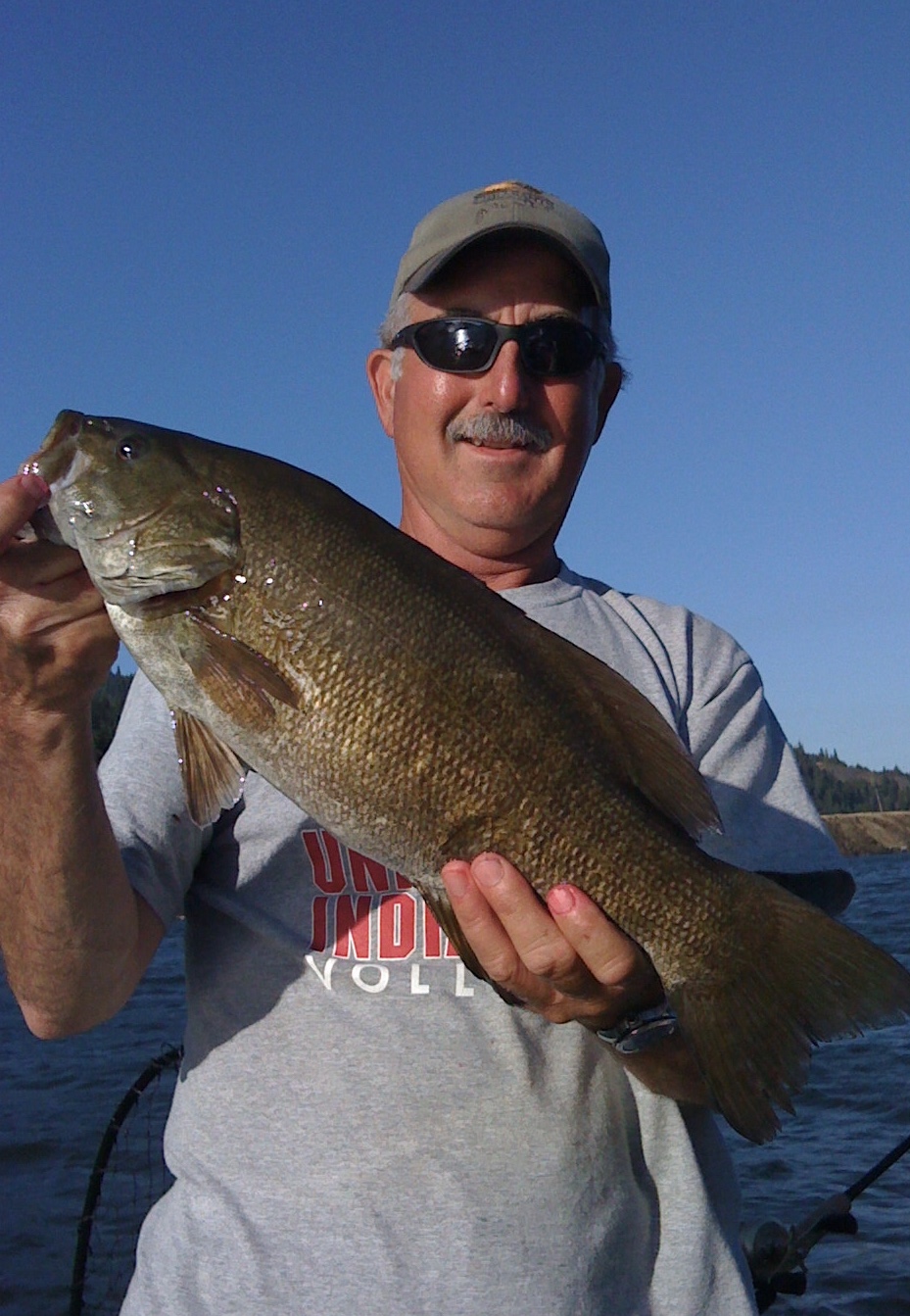Search
Latest Articles
Yakima River Smallmouth Bass
by Rob Phillips, June 02, 2019
This spring, with the Columbia River chinook salmon runs being far below predicted numbers and all of the salmon seasons closing early, there may be more of those “other fish” anglers than normal.
If the “no salmon blues” has got you down, or you just want to try something different, one viable option is to fish for smallmouth bass. And, while there are lots of places in Eastern Washington to fish for smallies, maybe the most overlooked and underfished is the Yakima River near the Tri-Cities.
Most anglers know the Yakima River as a quality trout fishing river. And it is. But the lower portion of the Yakima, between Horn Rapids Dam near Benton City and the mouth of the river where it meets the Columbia at Richland, can provide some pretty darned good bass fishing too.
In fact, in late spring and early summer it is possible for an angler working the right baits in this lower portion of the river to have days where they catch dozens and dozens of these feisty bass. And while most will be only a pound or two in size, smallmouth bass in the four and five pound class are available and are caught every spring.
Smallmouth inhabit big portions of the Columbia and the Snake and because the lower Yakima is slower, warmer and it provides excellent spawning habitat, the smallmouth move up into the Yakima during this time of year.
Biologists for the Department of Fish and Wildlife did some tagging studies several years ago that confirmed the fact that adult smallmouth bass enter the Yakima River in early spring and stay in the Yakima until late June, early July, when they migrate back into the Columbia River.
Bass are typically ferocious feeders, and the Yakima smallies are no different. You can catch them on a variety of lures, jigs and plugs. Crawdad colored crankbaits will work, as will small curly-tailed grubs in white, black, chartreuse or brown. Put the rubber grub on a quarter ounce jig head and bounce it along the bottom near the brushy shorelines and the smaller bass will go nuts over it.
Another good choice is a spinner. My favorite is the Vibric Rooster Tail, again in quarter ounce size, in brown or black. Regular Rooster Tails, Beetle Spins and other small spinners will also work.
Access to the river is in places limited, but there are spots where you can get a drift boat or pontoon boat into the water that will allow access to several miles of the river.
The fishing from a drift boat is pretty much the same for bass here, as it is for trout up higher on the Yakima. Pitching your bait or spinner into the shoreline, near rocky banks and up under overhanging brush will get plenty of strikes.
On a good day it is not uncommon to catch dozens of the hard-fishing bronzebacks in a day. Not all will be the 2-to 4-pounders that are lurking there, but some will be nice ones. Others will be 8- to 14-inches in length, but on ultralight gear, they are still a blast to catch.
While drifting and casting from a boat is probably the most productive way to catch Yakima River smallmouth because you can work both sides of the river, it isn’t the only way to do it. Working the same kinds of jigs and spinners from the bank will also catch bass.
Access to the river is available at some spots along Harrington Road below Horn Rapids Dam, and at a couple of bridges where side roads cross the river between West Richland and Richland.
Whether you wade or not, concentrate your efforts within 10 or 15 feet of shore and keep trying different colors and types of lures. Weather and light conditions seem to trigger different responses to different lures and colors.
While most people release the bass they catch, the light meat fillets of a smallmouth are excellent eating when prepared correctly. So keeping a few to eat is certainly no crime. In fact, the WDFW would like to see anglers catch and keep more bass.
Smallmouth bass regulations on the Yakima River fall under the general freshwater rules for smallmouth. The lower Yakima has no minimum size limit but only one bass over 14-inches may be retained. The daily limit is 10 smallmouth bass a day.
Now, if you hop outside the mouth of the Yakima and fish in the Columbia, there are no size regulations or limits on bass. That rule was changed a while back in an effort to increase harvest, which is the goal of biologists who believe that the overabundant bass are preying on the salmon and steelhead smolt on their outmigration.
This is the time of year when there is not a lot happening when it comes to salmon and steelhead fishing. Luckily, we have some other fishing opportunities available to us, and making a trip down to the lower Yakima for some smallmouth bass is one worth trying.
(Rob Phillips is an award-winning freelance outdoor writer who has been fishing all over the Northwest and writing about it for over 30 years. He can be reached at rob1@spdandg.com)
